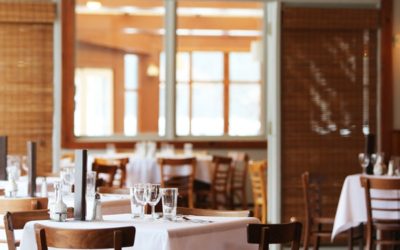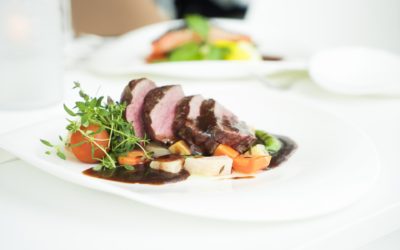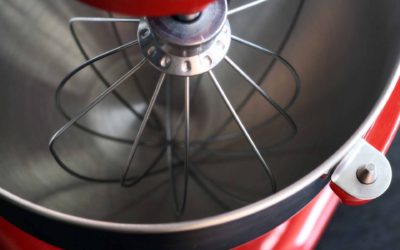Pest Preventions to Implement in Your Commercial Kitchen
January 10, 2018Restaurant pests: it’s something that few people want to think about. Like it or not, pest management is an essential consideration for every commercial kitchen.
Offering food, shelter and water, the unprepared commercial kitchen naturally provides everything pests need to survive and thrive. With the proper preventative measures, however, you can keep unhygienic, destructive pests from invading your commercial kitchen or restaurant.
Effective prevention and elimination of pest problems starts with a comprehensive pest management plan. Your plan should include everyone from managers, to maintenance and landscaping workers, to restaurant staff and pest management professionals. It may seem like a large undertaking, but if it can prevent property damage, keep your diners healthy, and maintain your reputation, it’s worth it.
5 Commercial Kitchen Tips for Pests
To get you started, here some of the top measures we recommend implementing in your commercial kitchen to keep the pests out.
- Educate yourself and your employees on common pests that seek indoor refuge at different times of the year. For example, rodents and insects like ground beetles and ladybugs seek warm, indoor places to stay for the winter. In the summer time, flies and mosquitos are common pests that are both annoying and carriers of disease.
Once you know which pests you could be dealing with, you can tailor your plan to keep specific pests out of your commercial kitchen and restaurant.
- Keep the exterior of your commercial kitchen secure. It only takes a small opening to let in insects, spiders and even rodents. Amazingly, according to the rodentologist, Dr. Bobby Corrigan, a mouse can squeeze through an opening the size of a #2 pencil – just ¼ of an inch wide. Its specially evolved skeletal structure is great for the mouse, but not so great for you and your commercial kitchen.
So what can be done to prevent these tiny holes from letting the pests into your commercial kitchen? Inspect your building’s exterior periodically for cracks and holes, and fill them with water-resistant sealant. Add weather stripping and door sweeps to keep pests out. Consult with a pest management professional to see if further measures, such as placing rodent traps on your property, are necessary.
- Eliminate outdoor food sources. The dumpster outside your commercial kitchen will attract rodents quickly if not kept closed and cleaned regularly. In addition, landscaping should be well-maintained to reduce the amount of edible vegetation that can attract pests to your commercial kitchen. Proper landscaping practices also reduce leaf litter and overgrown bushes that pests can use for cover.
- Reduce pest attractants in your commercial kitchen. This means cleaning up food spills, removing trash and recycled beverage containers daily, cleaning food residues from drains and kitchen equipment, repairing leaks quickly, sweeping frequently, and making sure all dishes are cleaned and dried at the end of each day.
- Pest-proof your food storage areas. Open-backed shelving will get reduce the number of places for pests to hide. Regular inspections for pests, using pest monitors and checking for signs such as bite marks, urine and droppings, will help you catch a pest problem before it turns into a bigger problem.
When creating and implementing your plan, enlist the help of a pest management professional, and of course, your employees. With everyone on board, you’ll be more effective at preventing and catching infestations, so your commercial kitchen can continue to operate healthily and your customers can keep enjoying your food!
5 Keys to Creating the Perfect Restaurant Seating Areas
Restaurants are about so much more than just food. From the setting and layout of your restaurant to your choice of colors, it takes a lot more than an appealing menu to keep diners coming back for more. When setting up your restaurant, booths and chairs are important...
5 Essential Buying Tips for Your Next Food Prep Work Table
The right foodservice equipment is pivotal to the efficiency of your kitchen. One of the most important types of foodservice equipment for any kitchen is the work table. With limited room on countertops available for your food prep needs, the cooking process can drag...
Tips for Keeping Your Commercial Sink Sparkling Clean
Your commercial kitchen, just like your personal kitchen, must be kept clean at all times. With all of the cooking and food processing you do, it is inevitable that your sink gets messy. Cleaning up your commercial kitchen is incomplete without proper cleaning of your...
Food-Cutting Secrets to Beautiful Dishes
In the restaurant industry, presentation is often said to be just as important as the food itself. Using the right knowledge, skills and restaurant supplies, you can incorporate creativity into your presentation, making guests feel that they are getting something...
Top Space-Saving Tips for Commercial Kitchens
Top Space-Saving Tips for Commercial Kitchens Space is always an important consideration when setting up a kitchen, and this is even truer for commercial kitchens. With a strong focus on functionality and the kitchen supplies that meet the needs of your commercial...
5 Ways to Get the Most Out of Your Mixer
No one wants to eat off of dirty or tarnished silverware. A stand mixer is a highly useful piece of kitchen equipment to invest in. Although this type of kitchen equipment does not usually come cheap, it can last a lifetime when properly cared for. Despite all your...
Restaurant Prep Tool Selection Simplified
What’s a restaurant kitchen without high-quality prep tools that can withstand the pressure of frequent use? Whether you already have a restaurant you’re running, or you’re just planning to launch one, one vital factor that could make or mar your business is how you...
Beginner’s Guide to Choosing a Commercial Ice Cream Freezer
Ice cream is a delicious and appealing desert treat for everyone, young or old. Having made the decision to sell ice cream to your customers, whether you have a restaurant, convenience store, or specialty ice cream parlor, it is time to begin stocking up on the right...
How to Choose the Right Kitchen Scales for Your Restaurant
A food scale is an essential item in every restaurant’s store of kitchen supplies. Designed to take the guesswork out of food measurement and maintain consistent food serving sizes, food scales are indispensable kitchen supplies in the commercial kitchen. With such a...
Beer Chilling Systems: Which Type Is Right for My Restaurant?
A refrigeration unit is integral to the functioning of any restaurant. Beers are best served cold - there’s no questioning that! But which beer chilling system is the best? From reach-in coolers to glycol chillers, a beer chilling system is an important piece of...
What Equipment Will I Need to run a Food Truck?
There’s a lot of planning that goes into starting your own food truck business. Before you hit the road with your delicious food offerings, you’ll need to fill up your truck with all the right foodservice equipment. Considering the lengthy list of possible items to be...
8 Types of Food Thermometers: What You Need To Know
Food thermometers are essential restaurant supplies for your commercial kitchen. They ensure that foods prepared in your commercial kitchen are cooked to the right temperature and held at that temperature for as long as necessary to kill any harmful bacteria. This...
How to Identify the Best Food Processor for Your Needs
Highly versatile and extremely efficient, food processors are designed to take away the hard work from repetitive kitchen activities. This type of cooking equipment can quickly become an invaluable tool in your kitchen. From chopping, to shredding, grinding, mincing,...
6 Keys to Choosing the Best Chafing Dishes for Your Restaurant
The chafing dish, also known as the chafer, is an essential piece of restaurant equipment for any establishment that wants to keep food hot. This type of restaurant equipment gets its name from the French word, chauffer, which means to heat, and it’s easy to see why....
Turning up the Dial on Commercial Fryers: How to Choose One for Your Restaurant
Fried food is a well-loved favorite. This is a fact. It also makes a fryer an important piece of equipment to have in your commercial kitchen. Just consider how many appetizers and sides require frying: onion rings, French fries, and fried green tomatoes are just a...















